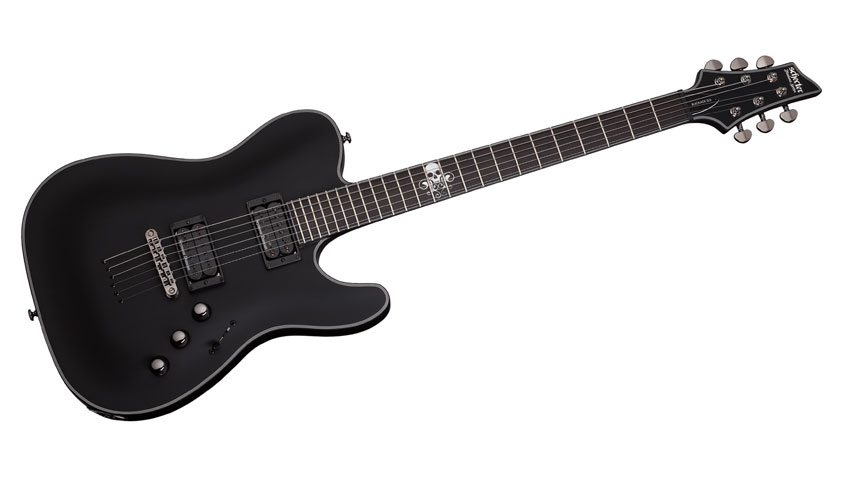MusicRadar Verdict
The Blackjack SLS PT is very much a case of function over form, perfect for metallers who don't need a purple flame top to make their point.
Pros
- +
Contouring, playability, smart looks and solid hardware. Clever choice of pickups.
Cons
- -
Not much.
MusicRadar's got your back
Short for Slim Line Series, Schecter's SLS combines a classic and understated outline with stripped-back finishing and a choice of active or passive pickups in the hopes of forging the ultimate modern metal guitar. But with stiff competition from Fender's Jim Root Telecaster and Charvel's Desolation series, this Blackjack won't have it easy.
"Believe it or not, the PT gets its name from Pete Townshend"
Believe it or not, the PT gets its name from Pete Townshend. It's not a signature model, but rather a nod to the custom Tele-inspired models produced for him in the late 70s and 80s.
The shape has been tweaked and sculpted to provide more comfort than Fender's slab-bodied original, and the inclusion of a carved top adds a premium feel. What really makes it for us, though, is the tasteful black binding, with three pinstripes on the body and one on the neck. No abalone nightmare here!
The PT features a three-piece maple set neck complete with Schecter's Ultra Access neck joint, carved to practically disappear under your hand, and delivering the svelte and speedy feel of a through-neck.
"Schecter gives you a choice of active or passive Seymour Duncan pickup options"
In play, the shallow C profile and jumbo frets don't disappoint, with the highly polished ebony fingerboard enhancing the almost 'mechanical' vibe of the guitar. We don't mean soulless, mind - the PT feels like a machine made for doling out the heavy stuff. It's all precision and violence, and that's a good thing.
Schecter also gives you a choice of active or passive Seymour Duncan pickup options. The passive option, as fitted here, combines Full Shred and Jazz humbuckers, while the active version comes with a set of Blackouts.
Sounds
The bridge unit may not offer quite the same levels of grunt as the battery powered alternative, but it does offer excellent, percussive accuracy. Its medium- high output complements the woodier and warmer Jazz unit, and feels perfectly at home in a mahogany body.
Obviously, if you're into something heavier, the Blackout- spec guitar would be more your thing, but the character of the passive units really appeals to us. Unlike the actives they offer extra versatility thanks to the coil-split, which opens up plenty in terms of sparkle and edge. It's a killer combo for hard rock, shred and fusion that feels more alive and organic than a set of actives.
“Built from the same sacred stash of NOS silicon transistors and germanium diodes, giving it the soul – and snarl – of the original”: An octave-fuzz cult classic returns as Jam Pedals resurrects the Octaurus
What’s the buzz? Meet Yellowjacket, Cherry Audio's recreation of EDP’s trend-setting Wasp from 1978
“A fabulous trip through all eight songs by 24 wonderful artists and remixers... way beyond anything I could have hoped for”: Robert Smith announces new Cure remix album










